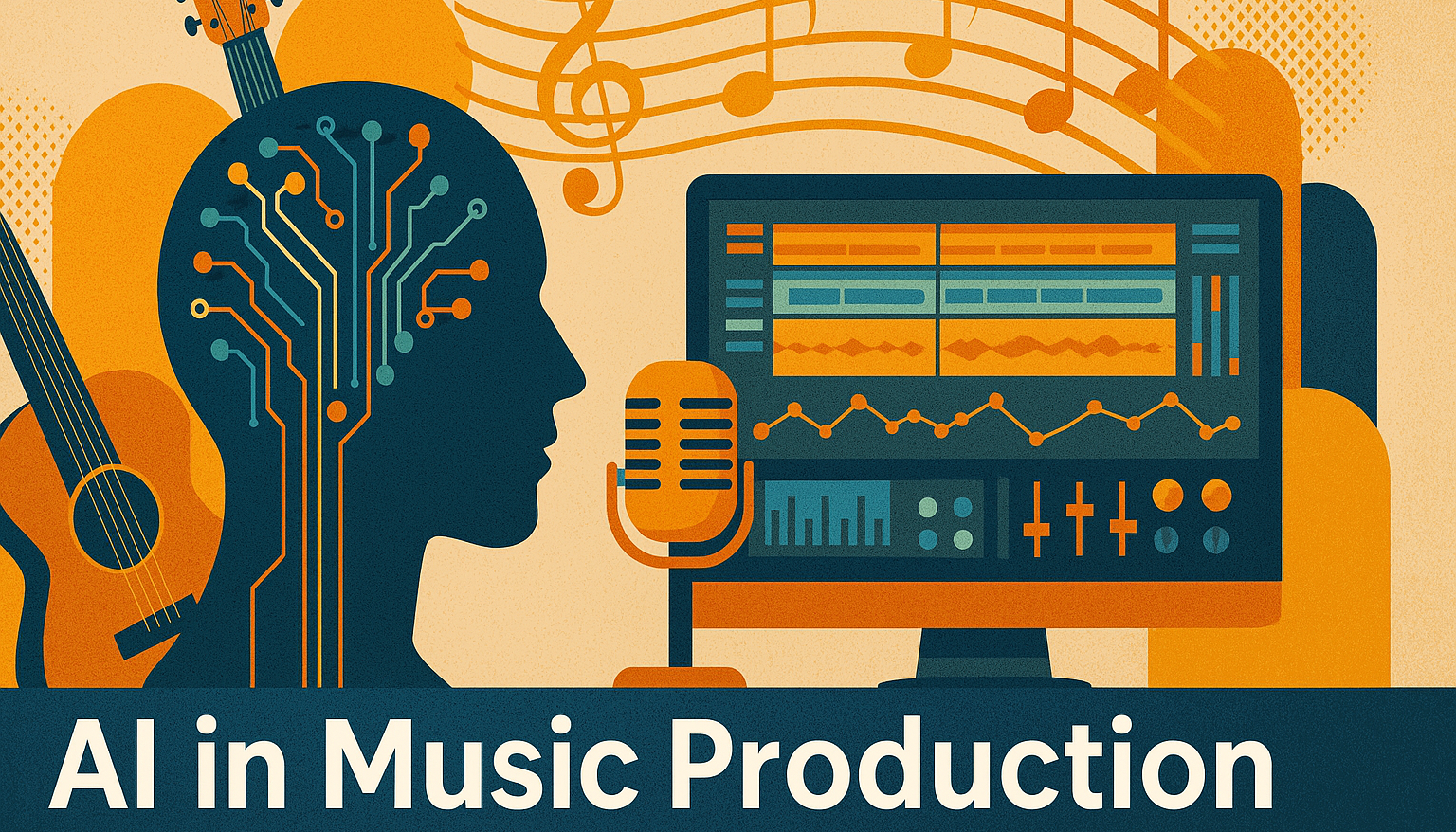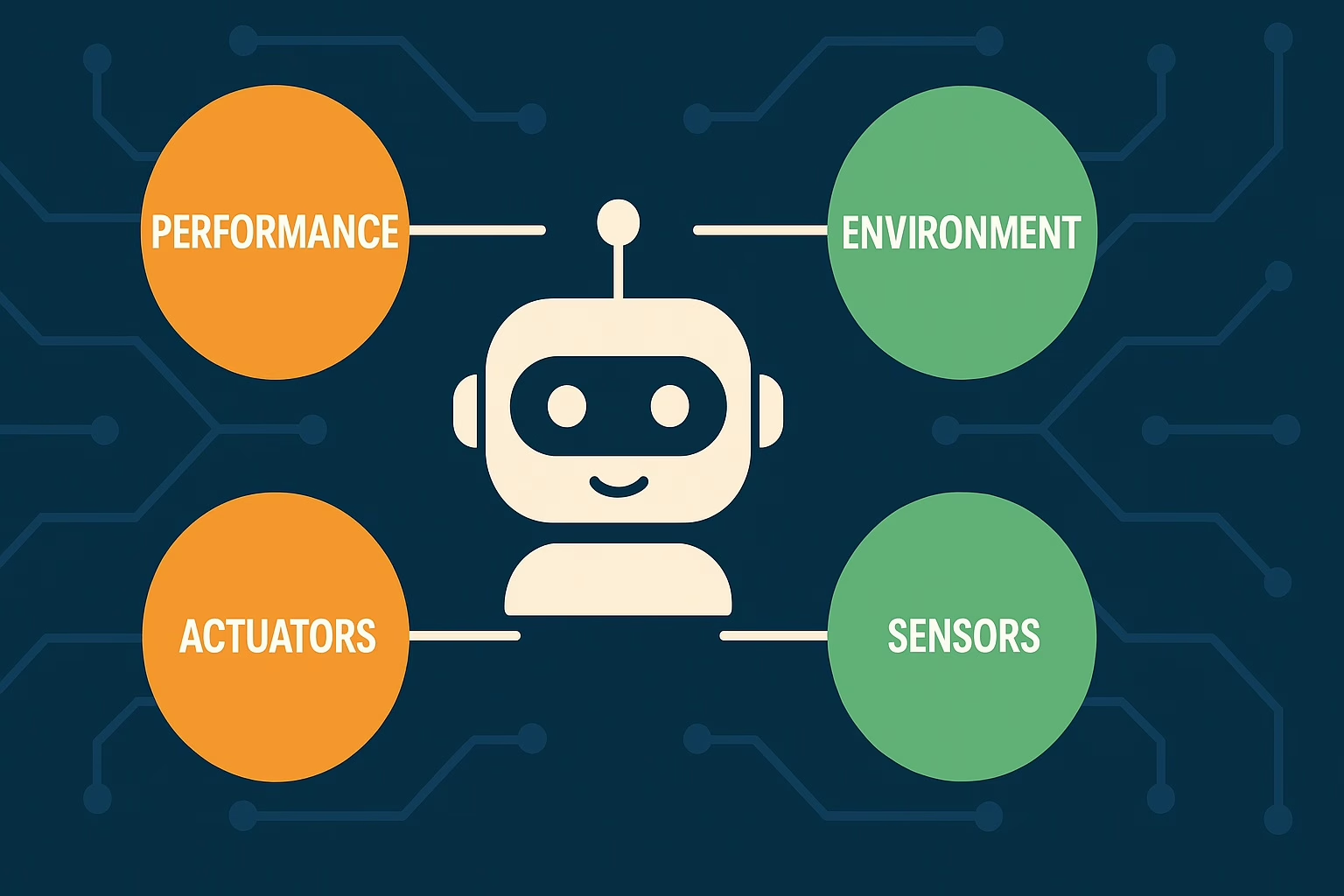Designing an AI agent without a proper task definition is like asking a robot to “just do stuff.” That’s chaos. So how do you define what an AI agent should do, where it will work, and how it will interact with the world? Enter the PEAS framework —a simple, powerful model that defines an agent’s universe in four neat chunks:
Performance, Environment, Actuators, and Sensors.
Let’s unpack PEAS and see how it helps us build agents that aren’t just functional—but actually smart.
“P” in PEAS Framework is for Performance Measures: What Does “Success” Look Like?
Before you build anything, you need to answer this:
How will you know if your agent is doing a good job?
That’s what performance measures are all about.
✅ What It Is:
It’s the list of metrics or goals that tell us if the agent is achieving its purpose.
💡 Real-World Examples:
- Self-driving car:
- Minimize crashes
- Maximize passenger comfort
- Reach destination quickly
- Spam filter agent:
- Block spam accurately
- Avoid flagging legit emails
- Keep false positives low
These are not instructions—they’re outcomes we want. The agent figures out how to get there.
🎬 Performance measures set the destination—how the agent drives there is its job.
“E” in PEAS framework is for Environment: Where Does the Agent Live?
Every agent lives in a world. That world is its environment.
✅ What It Is:
The environment is everything the agent interacts with—the stage where the agent performs.
💡 Real-World Examples:
- Smart home assistant:
- Your living room
- Devices it controls (lights, AC, TV)
- Ambient sound and user voice commands
- Trading bot:
- Stock market data
- Economic trends
- Real-time pricing feeds
The complexity of this environment will shape how intelligent the agent needs to be.
📦 No two agents have the same playground, which means their design can’t be one-size-fits-all.
“A” in PEAS framework is for Actuators: What Can the Agent Do?
Now that we’ve set the stage, what’s our agent capable of? That’s where actuators come in.
✅ What It Is:
Actuators are the tools the agent uses to act on the environment. They’re how it “does stuff.”
💡 Real-World Examples:
- Robot barista:
- Mechanical arms to pour coffee
- Wheels to move
- Dispensers to serve snacks
- Web crawler agent:
- Sending requests
- Clicking links
- Saving and storing content
Each actuator expands the agent’s power to affect its world.
⚙️ If sensors are the eyes and ears, actuators are the hands and feet.
“S” in PEAS framework is for Sensors: What Can the Agent Sense?
Before acting, an agent must know what’s going on. That’s the job of sensors.
✅ What It Is:
Sensors collect real-time information from the environment.
💡 Real-World Examples:
- Autonomous car:
- Cameras (visual input)
- LiDAR (distance sensing)
- GPS (location data)
- AI chatbot:
- User inputs
- Tone of conversation
- Language patterns
The better the sensors, the more accurate the perceptions—and that means better decisions.
🧠 The smarter the sensing, the smarter the agent.

PEAS Framework in AI: How It All Comes Together
Let’s make this practical with a full PEAS example.
🎮 Example: AI Agent for a Video Game Character
| PEAS Element | Example |
|---|---|
| Performance | Maximize score, avoid damage, complete objectives |
| Environment | Game world, obstacles, enemies, player interactions |
| Actuators | Movement (run, jump), attack, interact |
| Sensors | Enemy location, health level, player position |
You can build any agent with PEAS—whether it’s brewing coffee, fighting dragons, or solving supply chain logistics.
Why PEAS Matters in Real AI Design
You wouldn’t build a house without a blueprint, right?
Similarly, you shouldn’t design an AI agent without PEAS. This framework forces you to:
- Define the agent’s goals clearly
- Understand the context it operates in
- Identify tools and limitations
- Prepare for real-world complexity
Plus, using PEAS ensures your team (devs, designers, clients) are literally on the same page.
💡 Think of PEAS as the first 10 minutes of any successful AI project.
Final Thoughts: Why Every AI Project Needs PEAS
The PEAS framework is deceptively simple—and ridiculously powerful.
By clearly defining what success looks like, where your agent operates, and what it can sense and do, you give your AI the structure it needs to be smart, effective, and aligned with human goals.
So next time someone says, “Let’s build an AI,” just smile and ask:
“Cool. But what’s the PEAS?”
🔗 Related Articles in the Series
👉 AI Agents Explained: How They Think, Act, and Learn
🌐 External Resource
Explore the PEAS framework in context of intelligent agents in AIMA by Russell & Norvig













